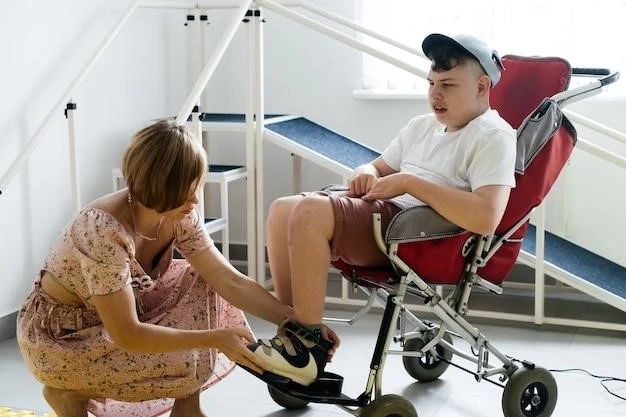Disease Overview ⸺ Macrogyria and Pseudobulbar Palsy
Introduction
Macrogyria is a rare neurological disorder characterized by an abnormality in the brain’s development, leading to thickened and folded cerebral cortex․ Pseudobulbar palsy, on the other hand, is a condition that affects the nerves involved in controlling facial muscles, causing speech difficulties, muscle stiffness, and swallowing problems․
Individuals with macrogyria and pseudobulbar palsy can experience a range of symptoms that impact their motor skills, speech, and daily functioning․ Understanding the challenges associated with these conditions is essential in providing effective medical treatment, therapy, and support to improve quality of life․
Symptoms and Effects
Macrogyria can lead to a variety of symptoms, including developmental delays, mobility issues, cognitive impairment, and difficulties with motor skills․ Pseudobulbar palsy often presents with speech difficulties, muscle stiffness, tongue spasticity, drooling, and swallowing dysfunction․
Individuals with these conditions may experience dysarthria, a speech disorder characterized by slurred or slow speech, and dysphagia, which can cause challenges with eating and drinking․ The combination of macrogyria and pseudobulbar palsy can result in a complex array of neurological challenges that impact both physical and cognitive abilities․
Specific Challenges
Individuals diagnosed with macrogyria and pseudobulbar palsy face a unique set of challenges due to the complex nature of these neurological disorders․ Some specific challenges include speech difficulty, muscle stiffness, tongue spasticity leading to drooling, and swallowing dysfunction․
The combination of macrogyria and pseudobulbar palsy can result in significant motor skills impairment, making activities of daily living challenging․ Developmental delays and cognitive impairment can further exacerbate these difficulties, impacting learning, communication, and social interactions․
Moreover, mobility issues may arise as a result of muscle stiffness and coordination problems, affecting the individual’s ability to move independently․ Coping with the various challenges posed by macrogyria and pseudobulbar palsy requires a comprehensive approach that addresses the physical, cognitive, and emotional needs of the affected individual․
Treatment Options
Managing macrogyria and pseudobulbar palsy involves a multidisciplinary approach that combines medical treatment, physical therapy, speech therapy, and occupational therapy․ Medications may be prescribed to manage symptoms such as muscle stiffness and drooling, while therapy aims to improve motor skills, speech function, and swallowing ability․
Physical therapy plays a crucial role in addressing muscle stiffness and mobility issues through customized exercises and stretching routines․ Speech therapy targets speech difficulty and swallowing dysfunction, aiming to enhance communication and ensure safe eating and drinking․
Occupational therapy focuses on improving the individual’s ability to perform daily activities independently, enhancing their quality of life․ Assistive devices and technologies may also be recommended to support individuals with macrogyria and pseudobulbar palsy in their daily tasks and communication needs․
Coping Strategies

Coping with the challenges of macrogyria and pseudobulbar palsy can be overwhelming for individuals and their families․ Implementing effective coping strategies can help enhance quality of life and provide much-needed support․ Establishing a strong support system comprising healthcare professionals, family members, and therapists can offer emotional and practical assistance․
Education about the conditions and their effects is essential in developing coping mechanisms and understanding the treatment options available․ Setting realistic goals and celebrating small achievements can boost morale and motivation in the face of ongoing challenges․
Engaging in relaxation techniques, mindfulness practices, and recreational activities can also help reduce stress and improve overall well-being․ Connecting with support groups and other individuals facing similar conditions can provide a sense of community and shared experiences, fostering resilience and mutual understanding․
Conclusion
In conclusion, macrogyria and pseudobulbar palsy present complex challenges that impact various aspects of an individual’s life, including speech, motor skills, and daily functioning․ The combination of these neurological disorders requires a comprehensive treatment approach that encompasses medical interventions, therapy, and support services․
By incorporating a multidisciplinary treatment plan involving medication, physical therapy, speech therapy, and occupational therapy, individuals affected by macrogyria and pseudobulbar palsy can work towards improving their quality of life and enhancing their abilities to communicate, move, and carry out daily activities independently․
Through the implementation of coping strategies, a strong support system, and a proactive approach to managing the symptoms and challenges associated with these conditions, individuals with macrogyria and pseudobulbar palsy can navigate their journey with resilience, determination, and a focus on maximizing their potential and well-being․
